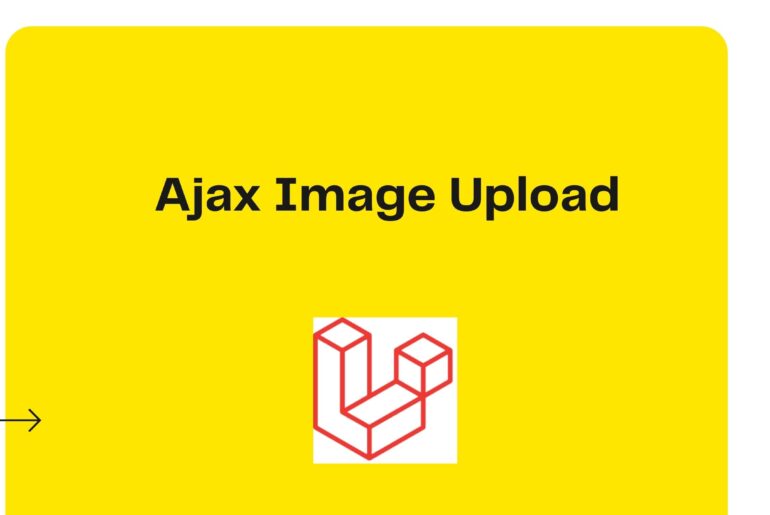Step 1: Install Laravel 9 Project
I am going to install a laravel project using composer.
composer create-project --prefer-dist laravel/laravel laravel9Step 2: Going inside of project using the command
cd laravel9Step 3: Setup MySQL database
Now, configure this database in the .env file.
DB_CONNECTION=mysql
DB_HOST=127.0.0.1
DB_PORT=3306
DB_DATABASE=laravel9
DB_USERNAME=root
DB_PASSWORD=root@123Step 4: Create ajax_images Table and Model also.
Here, I have created migration for ajax_images using Laravel 9 php artisan command, you can check command below.
php artisan make:migration create_ajaxImages_tableOnce this command is done open file database/migrations and put code inside of migration file.
<?php
use Illuminate\Database\Migrations\Migration;
use Illuminate\Database\Schema\Blueprint;
use Illuminate\Support\Facades\Schema;
class CreateAjaxImagesTable extends Migration
{
/**
* Run the migrations.
*
* @return void
*/
public function up()
{
Schema::create('ajax_images', function (Blueprint $table) {
$table->id();
$table->string('name');
$table->string('image');
$table->timestamps();
});
}
/**
* Reverse the migrations.
*
* @return void
*/
public function down()
{
Schema::dropIfExists('ajax_images');
}
}Now run migration command:
php artisan migrateStep 5: Create a Model
After creating “ajax_images” table you should create AjaxImage model. So first we have to run bellow laravel artisan command for creating AjaxImage model:
php artisan make:model AjaxImageFind a file inside of app folder
app/Models/AjaxImage.php
<?php
namespace App\Models;
use Illuminate\Database\Eloquent\Factories\HasFactory;
use Illuminate\Database\Eloquent\Model;
class AjaxImage extends Model
{
protected $fillable = [
'name', 'image'
];
use HasFactory;
}
Here I am going to create routes to get and post method. now open “routes/web.php” file and put below code.
routes/web.php
<?php
use App\Http\Controllers\EmployeeImageUploadController;
Route::get('employeeImageUpload', [EmployeeImageUploadController::class,'employeeImageUpload']);
Route::get('employeeImageUpload', [EmployeeImageUploadController::class,'employeeImageUploadPost'])->name('employeeImageUpload');Step 6: Create Controller
Now I am going to create a new controller as EmployeeImageUploadController. you can find inside of app/Http/Controllers/EmployeeImageUploadController.php. in this controller we will mange layout and image validation with post request, run bellow command.
php artisan make:controller EmployeeImageUploadControllerNow put code inside of the controller
app/Http/Controllers/EmployeeImageUploadController.php
<?php
namespace App\Http\Controllers;
use Illuminate\Http\Request;
use Validator;
use App\Models\AjaxImage;
class EmployeeImageUploadController extends Controller
{
/**
* Show the application employeeImageUpload.
*
* @return \Illuminate\Http\Response
*/
public function employeeImageUpload()
{
return view('employeeImageUpload');
}
/**
* Show the application employeeImageUploadPost.
*
* @return \Illuminate\Http\Response
*/
public function employeeImageUploadPost(Request $request)
{
$validator = Validator::make($request->all(), [
'name' => 'required',
'image' => 'required|image|mimes:jpeg,png,jpg,gif,svg|max:2048',
]);
if ($validator->passes()) {
$input['image'] = time().'.'.$request->image->extension();
$request->image->move(public_path('images'), $input['image']);
$data = ['name' => $request->name,'image'=>$input['image']];
AjaxImage::create($data);
return response()->json([
'success' => 'Image Upload Successfully',
'uploaded_image' => '<img src="/images/'.$input['image'].'" class="img-thumbnail" width="300" />',
'class_name' => 'alert-success'
]);
}
return response()->json(['error'=>$validator->errors()->all()]);
}
}Step 7: Create View
Here I am going to create employeeImageUpload.blade.php(resources/views/employeeImageUpload.blade.php) for layout and we will write design code here.
resources/views/employeeImageUpload.blade.php
<html>
<head>
<title>Laravel 9 Ajax Image Upload with validation: Real Programmer</title>
<link rel="stylesheet" type="text/css" href="https://maxcdn.bootstrapcdn.com/bootstrap/3.3.7/css/bootstrap.min.css">
<script src="http://ajax.googleapis.com/ajax/libs/jquery/1.11.2/jquery.min.js"></script>
<script src="http://malsup.github.com/jquery.form.js"></script>
</head>
<body>
<div class="container">
<h1>Laravel 9 Ajax Image Upload with validation: Real Programmer</h1>
<div class="alert" id="message" style="display: none"></div>
<!-- <form action="{{ route('employeeImageUpload') }}" enctype="multipart/form-data" method="POST"> -->
<form method="post" id="upload_form" enctype="multipart/form-data">
@csrf
<div class="alert alert-danger print-error-msg" style="display:none">
<ul></ul>
</div>
<input type="hidden" name="_token" value="{{ csrf_token() }}">
<div class="form-group">
<label>Name</label>
<input type="text" name="name" class="form-control" placeholder="Name">
</div>
<div class="form-group">
<label>Image</label>
<input type="file" name="image" class="form-control">
</div>
<div class="form-group">
<button class="btn btn-success upload-image" type="submit">Upload Image</button>
</div>
</form>
<span id="uploaded_image"></span>
</div>
<script>
$(document).ready(function(){
$('#upload_form').on('submit', function(event){
event.preventDefault();
$.ajax({
url:"{{ url('employeeImageUpload') }}",
method:"POST",
data:new FormData(this),
dataType:'JSON',
contentType: false,
cache: false,
processData: false,
success:function(data)
{
$('#message').css('display', 'block');
$('#message').html(data.success);
$('#message').addClass(data.class_name);
$('#uploaded_image').html(data.uploaded_image);
}
})
});
});
</script>
</html>Now you can open bellow URL on your browser:
php artisan serve